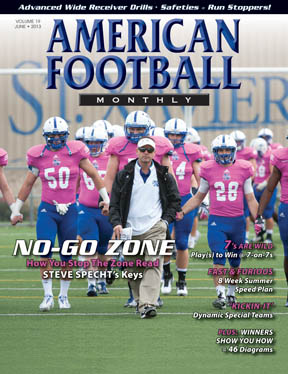Article CategoriesAFM Magazine
|
Speed Report - Football Speed Information: Good News or Old News?by: Dale BaskettFootball Speed Specialist © More from this issue I have been writing AFM’s Speed Report for 6½ years and have traveled the country for 30 years engaging with coaches who want to learn “thorough and complete football speed training”. Not second-hand information that isn’t football speed specific. More specifically, lineal track techniques. Coaches should understand that these particular techniques don’t provide movement skills needed for football speed and/or transition speed that’s required to play fast and stay in control. In addition, coaches need to avoid workouts that result in excessive fatigue. Speed training and fatigue are two separate metabolic energy systems. Less is more and more is less for speed work. Today, a majority of football coaches are still on the more side of things than less. Coaches need to learn and apply proven football movement techniques that wil....The full article can only be seen by subscribers.
|
|
|||||||
| HOME |
MAGAZINE |
SUBSCRIBE | ONLINE COLUMNISTS | COACHING VIDEOS |
Copyright 2025, AmericanFootballMonthly.com
All Rights Reserved





